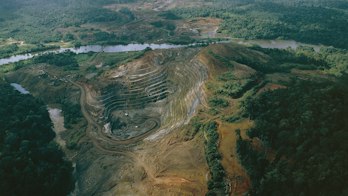Flagship report
Critical Minerals Market Review 2023

The role of critical minerals in clean energy transitions

An energy system powered by clean energy technologies differs profoundly from one fuelled by traditional hydrocarbon resources. Critical minerals such as copper, lithium, nickel, cobalt and rare earth elements are essential components in many of today’s rapidly growing clean energy technologies – from wind turbines and electricity networks to electric vehicles. Demand for these minerals is growing quickly as clean energy transitions gather pace.
Solar PV plants, wind farms and electric vehicles generally require more critical minerals to build than their fossil fuel-based counterparts. A typical electric car requires six times the mineral inputs of a conventional car and an offshore wind plant requires 13 times more mineral resources than a similarly sized gas-fired plant. Since 2010, the average amount of mineral resources needed for a new unit of power generation capacity has increased by 50% as the share of renewables in new investment has risen.
The types of mineral resources used vary by technology. Lithium, nickel, cobalt, manganese and graphite are crucial to battery performance. Rare earth elements are essential for permanent magnets used in wind turbines and EV motors. Electricity networks need a huge amount of aluminium and copper, the latter of which is the cornerstone of all electricity-related technologies.
As countries accelerate efforts to reduce emissions, they also need to ensure energy systems remain resilient and secure. The rising importance of critical minerals in a decarbonising energy system requires energy policy makers to expand their horizons and consider potential new vulnerabilities. Concerns about price volatility, security of supply, and the shifting sands of geopolitics do not disappear in an electrified, renewables-rich energy system.
This is why the IEA is paying close attention to the issue of critical minerals and their role in energy transitions. In July 2023, the Agency published its inaugural Critical Minerals Market Review, which aims to provide a clear understanding of today’s demand and supply dynamics and what they mean for the future. The Agency also hosted the first ever international summit on critical minerals and their role in clean energy transitions on 28 September 2023 in Paris. The event fostered dialogue among a wide range of global stakeholders, including government ministers, industry leaders, investors and members of civil society.
Additionally, critical minerals have been fully integrated into the IEA’s Global Energy and Climate Model, which means that the projections for critical minerals demand and supply are regularly updated in line with latest policy and technology trends in the IEA energy scenarios, notably in the World Energy Outlook and the Global EV Outlook. The updated projections are available through the IEA Critical Minerals Data Explorer, an online tool that intends to allow users to easily access and navigate the latest data.
Guidance for policy makers


Thank you for subscribing. You can unsubscribe at any time by clicking the link at the bottom of any IEA newsletter.